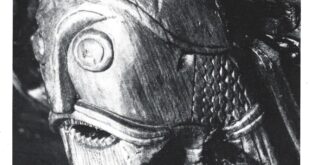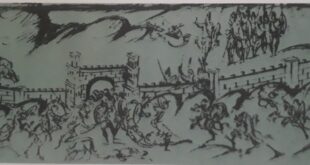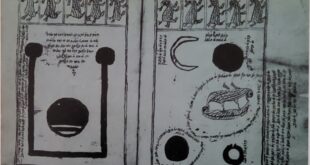Japanese renaissance was not until 794 A.D., when the Japanese capital was transferred from Nara to Heian (modern Kyoto), that Japan started to develop a national culture of its own. Since the sixth century, Japan has been ruled by a hereditary imperial famiiy. At first, the Japanese court modelled itself on the Chinese, in its principles of politics, ethics and religion, in its writing system and in its entire culture. About the year 1000, the Lady Murasaki Shikibu wrote the world’s first novel, The Tale of Genji, a masterpiece of literary invention, that mirrored the life of the brilliant Heian court. In painting, architecture and the decorative arts as well, there were signs of a growing culture that was remarkably refined, advanced for its time and most important, essentially Japanese in character.
Throughout Japanese history, legitimate authority has resided in the hereditary imperial family, which has been on the throne since the sixth century, but power lay in the possession of land. Despite seventh century measures designed to assert the imperial title to all land, powerful families amassed vast estates and in the course of time, won immunity from tax assessment. It is an ironical fact, that the power of the Fujiwara clan lay in precisely this kind of tax immunity, for eventually, it fatally weakened the imperial (and hence the clan’s) authority. Respecting the hereditary principle that was deep-rooted in all Japanese society, the Fujiwara never attempted to usurp the title of Emperor, but instead acted as regents. The Emperor gave legitimacy to their regime and was also the fount of honour, from which they could draw the titles and offices, to reward their family and supporters.

This acceptance of a higher if usually ineffective legitimate authority by the real rulers of Japan, was of immense importance in the country’s history. In all states and at all times, palace politics have been important, but in Heian Japan, they were virtually the sole activity of the regime. Some of the regents were gifted administrators concerned with the public interest; but their supremacy rested on their adept manipulation of palace politics and a subtle and deep understanding of the intricacies of social and human psychology. Thus the most powerful men in Japan, were long devoted not to the administration of the state, but to the maintenance of their power base in a court society, that had increasingly little contact with the country over which, in theory it ruled.
For most of the ninth century, the Fujiwara were merely the Crown’s most powerful ministers, but from about 900 to 1068 A.D., their power was virtually supreme. For the next seventy years, the “cloistered” emperors largely bypassed their Fujiwara ministers; finally, the family was displaced by the military clans, that they had called to their aid. Yet even during the ascendancy of the Fujiwara, administration was often threatened by turbulence in the provinces, only suppressed because the leading military families were willing to support the regency.

Thanks to external peace, the Empire had no effective standing army and there was no force to stop the encroachments of the great landowners; thus, by the end of the ninth century, most of the country was virtually controlled by vast tax-immune manors. Among the many causes of this process, two were particularly important. First, was the oppressive labour tax, which led many poor men to commend themselves to their more powerful neighbours. Second, were the large tax concessions granted by the government, theoretically for a limited period, to those who undertook the development and cultivation of new land, necessary to feed a growing population. Not only did the government find itself powerless in the long run to recall these concessions, but the landowners, from the greatest to the least, “reclaimed” vast tracts of poor or uncultivable land, for the sake of the tax concessions. Here again the little man, conscious of his weak claims to this kind of land, commended himself to a more powerful neighbour, paying him an annual rent for protection against the central authorities. It was in this environment of insubordination and lawlessness, that the great military clans were born. The central power was obliged to recruit its own provincial governors and police forces from the local nobility and even to call in their aid on occasion, to suppress rioting in the capital.
Fujiwara power depended on the marriages they arranged for their womenfolk and even at the height of their ascendancy, the great regents were to base their claim to power, first and foremost on their relationship to the royal family. In 986, Fujiwara Yoritada, father-in-law of the emperor who died in that year, resigned as regent. Since his daughter, the widowed empress, had produced no heirs, he could no longer claim connection with the royal family. Such an act, incomprehensible in Chinese terms, seems almost inevitable in Japan, where respect for the hereditary principle was total.

Now we arrive at the crucial weakness in the attempt of medieval Japan, to graft on to its body of politics, the principles of Chinese government. Codes embodying these principles were issued and successively revised from the seventh century onward, but realities and the system were out of touch. In Chinese politics, the idea of absolute hereditary right, was overruled by the doctrine of the mandate of heaven; any new imperial dynasty was vindicated by success — thus it proclaimed the support it enjoyed from the heavenly powers. For the Chinese, the guiding principle of state, as of human life, was that of Li, the traditional proprieties by which the harmony between heaven and earth and hence human happiness and political stability, were possible. In this system, a prime duty of the Emperor was to maintain the correct ritual conduct of his duties and the due observance of Li. The Japanese adopted this idea as well as a rigid hierarchy of administration designed for a state, where central authority was exercised; it was wildly unsuitable for a country where central authority was virtually unknown. Moreover, the Japanese were unable to take over the one thing that turned the Confucian doctrine of Li and the well-ordered state into practical politics namely, appointment to office on merit and public examination. With such a civil service, the Chinese Emperor could afford to believe, that the stability of his power, rested on his harmonious balance of the eternal principles of Yin and Yang.
The Japanese administration — divided between the bureau of Religion and that of State, in which the former was the senior — was dominated by the rulings of its own bureau of Yin-Yang, but the men who acted on these rulings, were usually well-born courtiers and nothing else. It is important to remember when reading the description of Heian society that follows, that despite its elegance and formality, it was surrounded by disorder and danger. Even within the court itself the veneer was thin and we learn from the diary of Lady Murasaki, that the boorishness of Michinaga himself, broke through the polite code of etiquette over which he presided. His predecessor was so confident of his position, that he would appear in the presence of the emperor stripped, to his undershirt for comfort in the heat of midsummer. This, in a society where both men and women dressed with meticulous care, wearing many layers of garments, each chosen for its colour, so that even the fringe of the sleeve of an undershirt, might be admired! The Heian court was uniquely sensitive to all aspects of human life: to etiquette, to dress, to learning and to the true movements of the heart itself. A lover was expected to conduct his courtship in delicate verses of his own composition and apt quotations from the Chinese classics.

The upsurge in the vitality of native Japanese arts, is well illustrated by the architecture of the new capital at Heian. The gridiron pattern of the town plan of Nara, had been closely copied from that of the T’ang capital of C’hang-an in China, while the architecture was also essentially Chinese. The rooms were paved in stone, the ceilings supported by painted wood pillars and the roofs, were of semi-translucent glazed green tiles. At Heian, a tradition of native Japanese domestic architecture asserted itself. The pillars and other woodwork were in unpainted dark wood, the roofs were covered with strips of bark from the hinoki cedar tree, while the floors were of wood raised on stilts above the ground, the court returning to the traditional Japanese habit of sitting not on chairs, but on rush matting on the floor.
Heian architecture and literature
Heian architecture had other distinguishing features. A noble family was housed in a complex of buildings. The shinden, or chief pavillion, was surrounded by a number of lesser ones, linked to one another and to the central one, by corridors or bridges. The whole was set in a formal park. The garden itself, which at first contained miniature replicas of beloved landscape scenes, came to be subject to strict laws, so that it became an object not only of esthetic, but also metaphysical contemplation, being viewed from a window and not entered.

Within the interior of Japanese houses, rooms were defined by sliding doors. Free-standing folding screens were also used to vary the space, or were placed between the participants in a conversation, where etiquette forbade that one should look on the other. The young Genji, in Lady Murasaki’s novel, might not see the face of his adored lady, until late in a courtship. On one disastrous occasion, the lady was so shy, that eventually one of her maids answered Genji’s gallantries from behind the screen of honour. Delighted by the sweet voice, he pressed his suit; when he eventually did see his princess he was horrified by her plainness!
Genjl, however, would atleast have been able to entertain himself with the works of the finest painters and poets of the court, for the screens and partitions were decorated with exquisite painting and calligraphy. The artist’s inspiration, was often a verse or line, from Chinese and later, even Japanese literature. This would be inscribed in a cartouche within the borders of the painting — thus, to the beauty of the painting was added the literary beauty of the text and the quality of the calligraphy. The native Japanese poetic form of the waka gradually supplanted Chinese forms. The subject matter also changed: from dealing with idealized landscapes with craggy mountains, so favoured by Chinese artists, poets turned to scenes in which undulating hills are decorated with the beauty of the flowering cherry tree and the purple-leafed maple. The subject matter became more urbane and the figures of Chinese legend, were displaced by daily scenes in the life of the Japanese aristocracy or of the common people.

It is possible that Lady Murasaki based her description of the early morning in a village on a screen painting, rather than her own actual observation of such a scene —the bleacher at work with his mallet or the threshing mills as they begin to grind into action at the beginning of a new day. One tenth-century court poet wrote a series of screen poems on the occupations of the twelve months, or on the character of the four seasons. Other poems were devoted to the description of famous provincial beauty spots of famous travellers on the road; of the life of the peasants or of nobles indulging in some typically courtly diversion such as hawking or admiring blossom on the trees. Painters delighted to set people in their landscapes and in her diary, Lady Murasaki records that one of the princesses at the court, loved to go out to see the sun go down or the moon fade, before the onset of the sun at dawn, or to follow a nightingale through the woods. Indeed, it is remarkable that in a society so essentially wedded to the urbane pleasures of the court and the delights of the capital, city life as such provided poets with little inspiration. Nevertheless, verses survive that poignantly tell of the pains of exile from the capital, for throughout the Heian period, exile was the standard punishment for subversion, or even political failure.
Hand in hand with the brilliant flowering of the arts, encouraged by the building of the new capital and with the development of a more, truly national style in painting — the so-called Yamato-e or “Japanese painting”— came a rise in the status of the painters themselves. Towards the end of the ninth century, we find for the first time, records of the names of the artists; among the most famous is perhaps Kanoaka – traditionally believed to have been the first to paint, real as opposed to imaginary Japanese landscapes.

The Tale of Genji
With the invention of a type of syllabary script in the late eighth and ninth centuries, it became comparatively simple to write Japanese. The result was not only that poets tended to abandon Chinese, but they moved toward the development of a prose literature — novels, memoirs and diaries. Great statesmen left diaries written in Chinese, which was to remain the language of scholarship for centuries to come, but it is in the Japanese novels and memoirs that the brilliant, sensitive — if some what artificial society, of Heian Japan lives.
These early Japanese renaissance works, which are among the most delightful books in world literature, range from the fairy-tale atmosphere of the Taketori monogatari – which tells how five noblemen and even the Emperor himself, attempted to woo a beautiful girl, only to find that she was a spirit, whose home is the moon – to the truly ardent Genji monogatari, or Tale of Genji. The genre of prose romance reached its highest flowering in the hands of female authors, at the beginning of the eleventh century. In addition to the work of Murasaki Shikibu (who wrote a fascinating diary as well as her famous novel), there was the diary of the poetess Izumi Shikibu, recounting her numerous amorous affairs; and the Pillow Book (Commonplace Book) of Sei Shonagon, another lady at the court.

Thanks largely to Chinese influence, divination and oracles became a central part of Japanese life. The bureau of Yin-Yang and its offices, was consulted not only on the auspices for the ceremonies of state, but also by the nobility on the most detailed aspects of life. For the people as a whole, there was a large and profitably-employed class of diviners and soothsayers. Perhaps the strangest of a mass of superstitions, was the belief that the spiritual powers walked abroad and that it was unlucky to cross their “directions.” Indeed, the world was so thick with dangers, that it was safest of all, to stay at home. Yet, even in this state of total withdrawal, called monoimi, one could not be certain of safety indefinitely — on every sixtieth day, the Day of the Monkey, danger could be avoided only by staying watchful all night and residing in a neutral place. In the year 1104, the cloistered Emperor Shirakawa spent the Night of the Monkey in his carriage, at one of the gates of the city — returning to his palace only at daybreak. If a man had to go out on an inauspicious day, he might wear a ticket, called an imifuda, in his hat, to warn people with whom he came in contact, that they should not approach him. The Japanese delight in ceremonial and display of all kinds was so great, that we have contemporary records of great occasions, where some of the spectators present arrived, wearing their imifuda, anxious not to miss the ceremony and protecting themselves, against the powers of evil in this way. Some of the most magnificent displays were those put on by the Buddhists.
Buddhism came to Japan during the seventh century. Its immense influence at the capital in the Nara period, may have been a factor determining the move to Heian, but Buddhism was to have a deep and lasting effect on Japanese culture. Its broad and non-exclusive nature, enabled it to accommodate the local spirits and gods of the Shinto cults – as the protectors of the Boddhisatvas of Buddhism; and the old faith held its own as an essential part of the religion of the state and the people.

In the early ninth century, the sects of Tendai and Shingon arose, both modifications of sects already established in China. The centre of Tendai Buddhism was the monastery of Enryakuji, built on Mount Hiyiei overlooking Heian. It was as dangerous to the life of the capital, as anything that may happen at Nara. As the century progressed, both sects became increasingly esoteric and during the late tenth and eleventh centuries, they were to some extent, displaced by the cult of the merciful Buddha Amida. This cult revolved around belief in immediate rebirth in the paradise of Amida and a very simple devotional system based on repeated invocations of the name of Buddha.
Perhaps the most influential of all the precepts of Buddhism, was the belief in reincarnation and above all, the idea of Karma; roughly to be described as the belief in the unavoidable cause-and-effect relation between past, present and future and the conviction, that man’s life was affected at every turn by events in his own past lives. Such a belief squared well with the strong streak of fatalism in Japanese thought and the quietistic aspect of Buddhism, constituted a welcome contrast to the violence of life itself. Yet the Buddhist monasteries were far from quietistic in their contacts with the world at large. Rich and tax exempt, they soon recruited immense bodies of fighting men. These armed “monks” enjoyed a semi-religious status, somewhat analogous to the lay brothers of Western monasticism and their rioting came to be a constant threat to the capital. The civil authorities often showed understandable reluctance to proceed against them.

There were many occasions in the history of Western monasticism, when its representatives fell far below the high aspirations of their vocation. Very rarely, do we find accounts, of the outright hooliganism, that was a recurrent feature in the history of the monasteries, around the Japanese capital. Of course, the proximity of Japanese Buddhist monasteries to the cities, was an important fact in their development. Nevertheless, at the other extreme, we find examples of asceticism and pioty, among Buddhist monks, which more than equal the most exalted achievements of the West.
It is above all, this contrast between extremes, that strikes us so forcibly about the society of medieval Japan. A civilization of remarkable sensibility and esthetic achievement, was born in a country not remarkably rich in natural resources. Its court was governed by elaborate and elegant ritual and an exquisite awareness of the nuances of social convention and human sensitivities. Yet, as minor but revealing episodes from the history of the period show, the physical conditions of life were often uncomfortable and the brutal and coarse facts of human nature often broke through the facade of etiquette. In comparison with the situation in Europe, during the eleventh century and indeed for generations to come, however, the civilization of this Oriental culture is breathtakingly advanced.





